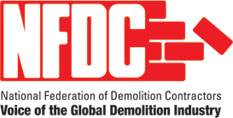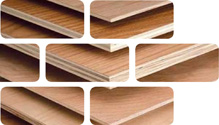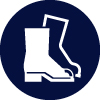
Plywood Wood 17 02 01
Plywood is a laminated product using multiple layers of wood veneer and glues, to suit an end product. Plywood is manufactured in standard sizes of various thicknesses, depending on the specification required. It is available in varying quality, from shuttering ply to marine ply. Some sheets have a finished veneer to suit the architectural finish.
Personal Protective Equipment
PPE requirements indicated are for guidance purposes only. DRIDS has identified the PPE that is mandatory on all demolition projects and ones that may be required subject to site specific Risk Assessment & Method Statement (RAMS). Hover over the icon to determine the types of PPE required for the removal of this material.
Removal, Segregation & Storage
Depending on the particular use of a plywood sheet, will determine how it is removed, segregated and stored. Veneered, marine and thick plywood sheets that are in good condition and not coated with glues or bitumen will have a reclamation or reuse value. They should be segregated and stored flat on a suitably sized pallet or on timber skids, preferably inside or covered with plastic or tarpaulin sheets to keep them dry. They should also be stored away from plant movements to prevent splash damage or breakage. Hoarding that is to be used again should be stored in a similar fashion, but not necessarily covered or protected as there is often no reclamation value and they are designed to be weatherproof.
Tools
Fixtures, Fittings & Connections
Plywood floors, roofs and cladding are traditionally fixed in place with floorboard nails, oval nails, screws, a glue or adhesive. For some wall panel systems, the plywood sheets will tightly run inside metal, timber or plastic channels without the need for fixings. Flat roof sheets will often be coated with bitumen and felt. Hoarding is often coated in preservative and a paint.
Health & Safety
Subject to task-specific Risk Assessment & Method Statement (RAMS). Use correct protective equipment for removing fixings, especially nails and screws. Wear gloves when handling sheets with damaged edges, coated in bitumen or adhesives to prevent irritation, cuts and splinters. Wear eye protection when removing nails with a crowbar, hammer or nailbar. Do not walk on wet and slippery sheets that have been painted or coated in a veneer or vinyl poster.










